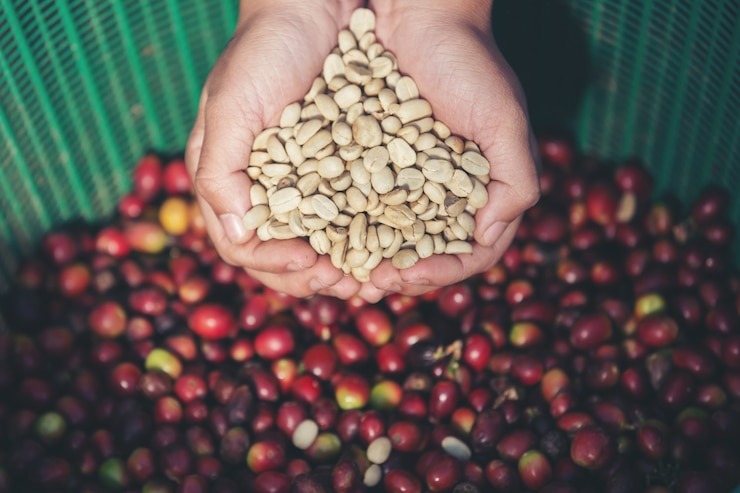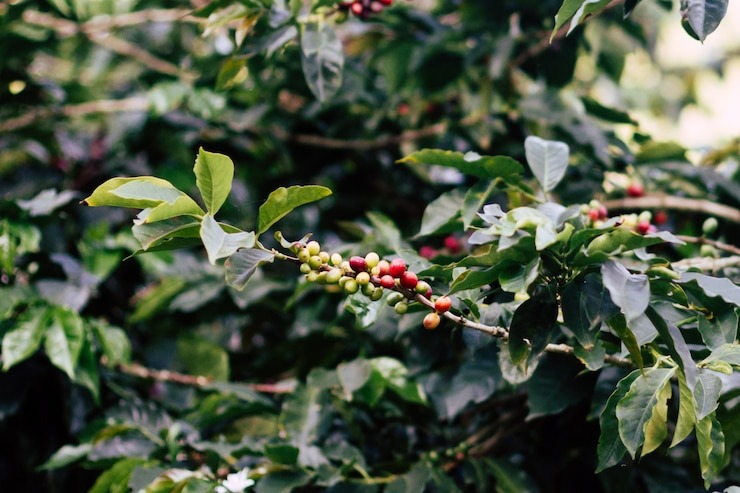The demand for coffee has given rise to coffee shops in every other street corner, food court, mall, and plaza. These shops not only serve a better cup than most chain stores, they also carry better snacks and other food items.
But if you are setting up a shop, you are going to face stiff competition from all the existing shops and also the retail chains. So how do you stand apart and draw customers to your door?
The simplest answer to this is “quality products”. While many carry different coffee-based drinks and food items, niche products like Brazilian Rio Minas Coffee can elevate the demand for your shop.
Must haves for a cafe
A few key things to consider when you are opening a cafe is:
- Location: Cafes should be in a location that has a good footfall. Areas with a high density of offices and shopping districts are excellent places to open a cafe.
- Ambiance: A cafe should be relaxing enough so that people can decompress after a long day at work. They should also have a fast-paced service for people facing the morning rush.
- A good cup of coffee is the least a person wants when they go to a coffee shop. No cafe can succeed without serving a solid cup of coffee.
- Quality products like Brazilian coffee beans, food items, and locally sourced products.
- A reliable community: Having a reliable group of regulars will help drive the business. Hosting book clubs and live bands can help with this.
- Seating options: A shop should be designed in a way that it seems spacious since those in a rush are less likely to visit an overcrowded shop.
Along with these, coffee grinders, coffee machines, toasters, blenders, ovens, and other basics are also necessary for a cafe. Further, well-trained baristas are also needed to run a cafe smoothly.
How do you make your cafe successful?
Now that you have set up your coffee shop, let’s put it on the road to success.
Other than a business plan, for any business to be successful, the owner needs to:
- Conduct market research to check which products are more popular and which have the potential to grow.
- Have a niche to draw customers with the allure of something exclusive.
- Be organized and efficient
- Have a solid marketing strategy to draw customers and put themselves on the map.
- Learn about the competitors and develop an effective business strategy
- Ensure customer satisfaction to create a dedicated clientele.
- Take calculated risks to venture into new products and grow their customer base.
Along with this, a cafe needs:
- A diverse menu with a good selection of different types of coffee.
- Quality products like Brazilian coffee, and food items
- Having a good location
- Maintaining quality
- Partnerships with suppliers
Carrying premium coffee items like Brazilian Rio Minas coffee, and food items like pastries flavored with coffee are a good selection to carry for any coffee shop.
The most popular coffees

Coffees get their distinct flavor from the coffee beans. The four most popular coffee beans are:
- Arabica
60-70% of all coffee beans come from Arabica coffee which is widely grown in areas of high elevation like Brazilian Rainforests. These are sweet, delicate, and light and produce coffee that lacks bitterness. Most Brazilian coffee produced is Arabica.
- Robusta
These are the second most widely produced coffee beans, popular in the Middle East and Africa. These have a strong, harsh flavor profile. The plants also have more caffeine and are hardier as compared to their Arabica counterparts.
- Liberica
Making up only 2% of the world’s supply, these originate from South East Asia. It has a floral, smoky, and bold flavor profile.
- Excelsa
With a fruitier profile, it is also a variant of Liberica and originates from South East Asia. Instead of being single origin coffees, these are used to make coffee blends.
So how do we pick our coffee bean? This essentially depends on how you like your coffee. Arabica is meant for people who drink their coffee black, without milk or sugar. Robusta makes a really strong brew, so it is usually preferred with milk, sugar, and other additives. Liberica and Excelsa make for excellent blends.
Brazilian coffee

Brazil with a few unique characteristics has become the largest producer of coffee:
- Relatively stable, hot, humid climate,
- Heavy rainfall and proper dry seasons
- High-altitude regions for growing Arabica
- Introduction of coffee farming by the Portuguese
Different types of Brazilian Coffee
Brazil grows a wide variety of coffee beans:
- Brazilian Arabica is a sweet delicate coffee that is widely consumed.
- Brazilian Rio Minas coffee is a stronger Arabica coffee, grown at high altitudes and is used to make Turkish coffee.
- Minas Gerais is a region that grows specialty coffee with its rich soils and high elevation.
Pros and Cons of Drinking Brazilian Coffee
High-caffeine drinks can lead to jitters, anxiety, and insomnia, along with high blood pressure and bone loss. They can also get an energy crash when they are suddenly exhausted but also unable to rest.
This is the main reason why people go for decafs. However, many hate the taste of decafs since they can be both bland and bitter at the same time. So what can be a good alternative?
With its smooth taste and moderate caffeine content, Brazilian coffee offers an energy boost without side effects like jitters and crashes.
Additionally, it has the following benefits:
- Has a rich taste without being overly bitter
- High in antioxidants
- Neither too mellow nor too bitter
- Has moderate caffeine content
- Protects the brain against cognitive deficiencies
- Reduces the risk of Parkinson’s and Alzheimer’s disease.
Brazilian Rio Minas Coffee
One of the more premium variations of Arabica produced is Brazilian Rio Minas Coffee. With its strong taste, it reminds people of the stronger coffee blends from the Balkans. It is versatile in its use and has gained popularity since it can be used to make dark roasts without turning bitter.
These are used for:
- Making a rich, delicious Turkish coffee
- High-quality espresso blends
- Making coffee blends for Eastern European regions (the Balkan states)
Rio Minos is grown in the Minas region of Brazil at altitudes of 600-2000 meters. Some things to know about them are:
- They are processed naturally
- A rich nutty, chocolate taste
- Are grown at high altitudes
- Recommended for milk-based brewing
Green Coffee Beans
These are nothing but regular coffee beans that haven’t been roasted.
Getting these offer your cafe the flexibility to roast them as per your needs and create custom brews. An oven, some parchment paper, and a pan or baking tray are all that you need to make the perfect roast.
However, drinking them as is without roasting has a few added health benefits:
- Weight loss
- Regulating blood pressure
- Can help with cancer prevention
- Regulating blood sugar
- Its antioxidants can help with detox and have anti-aging effects
Coffee shops that carry Brazilian Rio Minas Coffee, have the added advantage of serving their customers a healthy drink along with their morning dose of caffeine.
Using Brazilian coffee in recipes

Are you only thinking about serving your coffee as a drink? The most common coffee-based drinks are:
- Latte
- Espresso
- Americano
- Mocha
- Flat white
- Cold brew
However, these are available at every coffee shop and chain store. Make your drink menu special by using Brazilian Rio Minas coffee to create special brews.
Brazilian coffee lends itself well to many drinks.
- An Italian affogato
- A Turkish coffee in a traditional copper cup
- Portuguese Galo with ¼ espresso and ¾ milk
- Austrian-style strong espresso with a whipped cream topping
- German, iced cold cream coffee
- A 1:1 creamy Spanish coffee
- Qahwa, from Saudi Arabia, with green Brazilian Rios Minas coffee beans and spices like cardamom, cloves, cinnamon, and rosewater.
- A frothy Greek frappe
A wide range of varieties is sure to make your coffee shop a must-visit for coffee lovers.
Additionally, the sweet, nutty, chocolate, and caramel flavor of Arabica pairs well with desserts that use coffee like cakes, coffee creams, and pastries. A dark roast espresso made with Brazilian Rio Minas Coffee can also be used to make a nice Tiramisu.
Chefs, these days are also making simple savory recipes that use coffee, some of which are available online. Cafes can use these savory recipes to create simple breakfast options for their customers and boost their menu.
So which coffees should you carry?
When picking the coffee bean that you want to use, keep the following things in mind:
- The menu and target customers
- A well rounded selection of beans
- Obtaining good quality coffee beans
- Specialty coffees which people might not have at home
Using options like Brazilian Rio Minas Coffee and Arabica coffee beans, a cafe owner can have the versatility to create different types of drinks.
Brazilian coffee producers mostly grow Arabica which are more delicate as compared to their counterparts. It has reached premium status since they need more care during their growing period. With its more delicate flavor profile, and lower caffeine content the demand for Arabica has grown worldwide.




